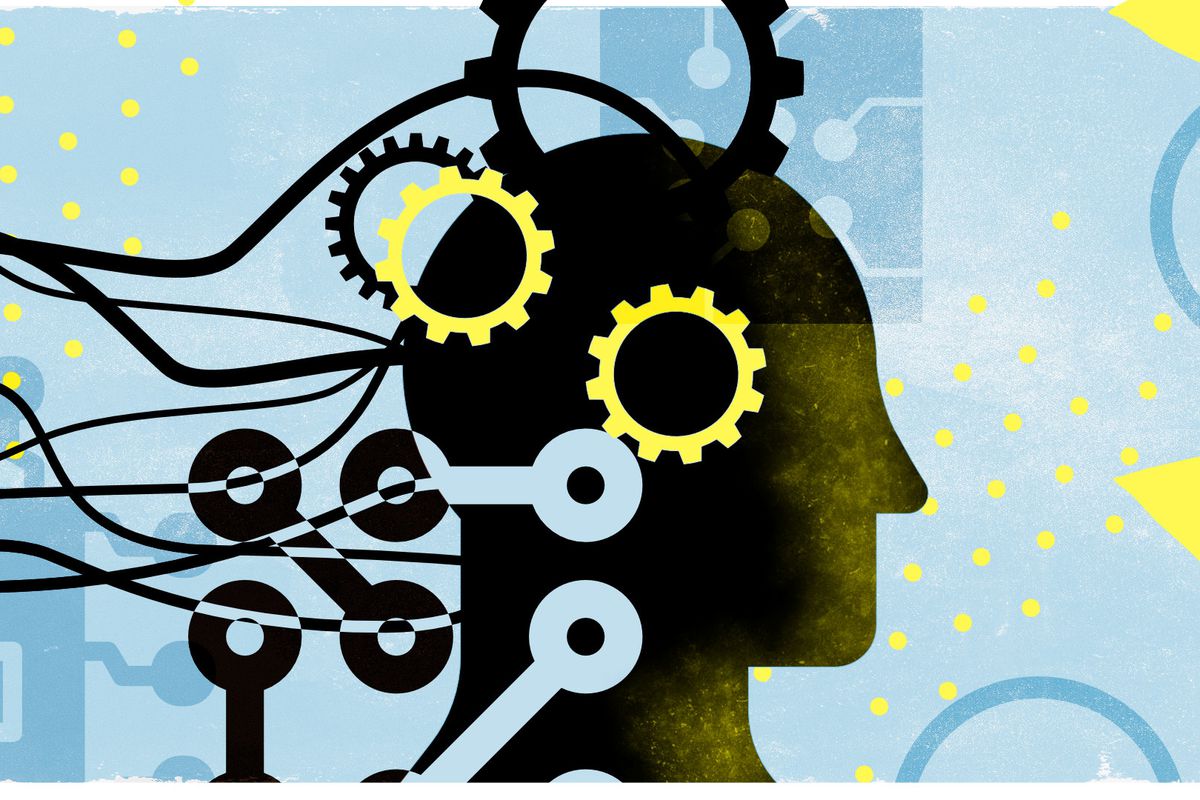1. Introduction
In today's digital age, stock image platforms like Shutterstock have become go-to resources for designers, marketers, and content creators seeking high-quality visual content. As technology advances, the rise of AI-generated images has sparked curiosity and raised questions about their acceptance on platforms like Shutterstock. This blog post aims to explore the submission criteria of Shutterstock and delve into whether or not they accept AI-generated images. By understanding the guidelines and policies set forth by Shutterstock, we can gain insights into the evolving landscape of stock imagery and the role of AI in this creative industry.Also Read This: A Scampagnata Alamia e Sperandeo – A Unique Photo Series on Alamy
2. Understanding Shutterstock's Submission Criteria
 Before diving into the acceptance of AI-generated images, it is essential to grasp the submission criteria established by Shutterstock. These guidelines serve as a framework for ensuring the quality, relevance, and legal compliance of the images available on the platform.
Before diving into the acceptance of AI-generated images, it is essential to grasp the submission criteria established by Shutterstock. These guidelines serve as a framework for ensuring the quality, relevance, and legal compliance of the images available on the platform.A. Content Quality:
- High resolution: Shutterstock typically requires images to have a minimum resolution of 4 megapixels to ensure clarity and versatility for various uses.
- Composition and aesthetics: Images should demonstrate strong composition, visual appeal, and creative elements that engage viewers.
- Technical quality: There should be no noise, artifacts, or significant imperfections that might hinder the usability of the image.
B. Relevance and Market Demand:
- Commercial appeal: Images that cater to the needs and interests of a wide range of customers are preferred.
- Market trends: Shutterstock encourages contributors to stay updated on current trends and provide relevant content to meet customer demands.
C. Legal and Copyright Considerations:
- Model and property releases: Images featuring recognizable people or private property require appropriate releases to protect the rights of individuals and property owners.
- Intellectual property rights: Shutterstock does not accept images that infringe upon copyrights, trademarks, or other intellectual property rights.
Also Read This: Do Buyers Actually Purchase Stock Photos from Alamy?
3. AI-Generated Images: Definition and Advancements

A. Definition of AI-generated images and their creation process
- Explanation of AI-generated images as digital visuals created by artificial intelligence algorithms
- Overview of the generative models used in AI image synthesis, such as Generative Adversarial Networks (GANs) and Variational Autoencoders (VAEs)
- Discussion of how AI models are trained on large datasets to learn patterns and generate new images
B. Overview of recent advancements in AI technology for image generation
- Highlighting the rapid progress in AI-generated images in recent years
- Mentioning breakthroughs in realistic image synthesis and style transfer
- Examples of AI-generated images being used in various domains, including art, advertising, and entertainment
C. Potential applications and benefits of AI-generated images
- Exploration of the creative possibilities offered by AI-generated images
- Discussion of how AI can help streamline the design process and generate large volumes of images efficiently
- Mentioning the potential cost savings and time advantages of AI-generated content
D. Ethical considerations and challenges in AI-generated image creation
- Addressing concerns related to copyright infringement and intellectual property rights
- Discussion of potential biases and ethical implications in AI-generated images
- Importance of responsible and ethical use of AI in creative content generation
E. Impact of AI-generated images on the stock image industry
- Examination of how AI-generated images may disrupt traditional stock image creation
- Potential benefits and challenges for stock image platforms like Shutterstock in accepting AI-generated content
- Discussion of how AI-generated images can enhance the diversity and variety of available stock images
F. Examples and showcases of notable AI-generated images
- Showcasing visually impressive and innovative AI-generated images
- Highlighting successful projects or artworks created using AI models
- Illustrating the potential and capabilities of AI-generated images
G. The future of AI-generated images
- Speculating on the future advancements and possibilities in AI-generated image creation
- Discussing potential integration of AI-generated content into mainstream creative industries
- Final thoughts on the evolving role of AI in image creation and its impact on various sectors
Also Read This: How to Extract YouTube Audio for Personal Use or Editing
4. AI-Generated Images and their Acceptance on Shutterstock
AI-generated images, produced through machine learning algorithms, have gained attention for their unique and often stunning visual compositions. As the technology advances, it raises questions about whether Shutterstock accepts AI-generated images and how they fit within the platform's submission criteria.A. Exploring the acceptance of AI-generated images on Shutterstock:
- Recognition of AI-generated images: Shutterstock acknowledges the potential of AI-generated images as a creative form and has been open to accepting them under certain circumstances.
- Evaluation based on quality and relevance: AI-generated images, like any other submissions, are assessed based on their quality, relevance, and market demand. They need to meet the same standards as traditional photographs or illustrations.
B. Benefits and challenges of using AI-generated images:
- Unique visual aesthetics: AI-generated images often possess distinct artistic qualities that appeal to certain audiences or creative projects.
- Expanding creative possibilities: AI-generated images can offer new avenues for creativity, allowing designers and artists to experiment with unconventional visuals.
- Ethical considerations: AI-generated images raise ethical questions regarding authorship, originality, and potential biases inherent in the training data.
C. Case studies or examples of AI-generated images accepted on Shutterstock:
- Showcase successful AI-generated images: Highlight specific examples of AI-generated images that have been accepted on Shutterstock, demonstrating the platform's openness to such content.
- Discuss the qualities that contributed to their acceptance: Analyze the characteristics that made these AI-generated images meet Shutterstock's submission criteria, such as high technical quality, commercial relevance, and legal compliance.
By exploring the acceptance of AI-generated images on Shutterstock, we can gain insights into how this emerging form of creative expression fits within the platform's existing guidelines and the broader stock image industry.AI-generated images of famous figures reimagined as a nightclub DJ.
Images generated with Midjourney:1. Elon Musk pic.twitter.com/2gDoP0kWvZ— Rowan Cheung (@rowancheung) July 1, 2023
Also Read This: The Role of Imago Images in Creating Eye-Catching Ad Campaigns
5. Guidelines for Submitting AI-Generated Images
Submitting AI-generated images to Shutterstock requires careful attention to ensure they meet the platform's submission criteria. Here are some guidelines and best practices for creators looking to submit AI-generated images:A. Understand Shutterstock's requirements:
- Familiarize yourself with Shutterstock's content quality standards, resolution requirements, and technical specifications.
- Ensure your AI-generated images meet the minimum resolution of 4 megapixels and have high-quality compositions.
B. Focus on relevance and market demand:
- Consider the target audience and the market trends when creating AI-generated images. Aim for commercial appeal and cater to the needs of potential customers.
- Research popular themes and subjects on Shutterstock to align your AI-generated images with current demand.
C. Ensure legal compliance:
- Obtain appropriate model and property releases if your AI-generated images feature recognizable individuals or private property.
- Avoid using copyrighted material or infringing upon intellectual property rights. Ensure that your AI models and training data comply with legal requirements.
D. Pay attention to image aesthetics and diversity:
- Strive for visually appealing and engaging compositions in your AI-generated images.
- Experiment with different styles, subject matters, and perspectives to offer a diverse range of AI-generated content.
E. Consider ethical implications:
- Reflect on the ethical considerations associated with AI-generated images, such as biases in training data and the potential impact on creative industries.
- Ensure transparency in disclosing the use of AI in generating the images to maintain trust and provide proper attribution if necessary.
F. Test and refine your AI models:
- Continuously evaluate and refine your AI models to improve the quality and relevance of the generated images.
- Seek feedback from peers or experts to enhance the artistic and technical aspects of your AI-generated images.
Also Read This: How to Upload Adobe Stock Using Windows Explorer
6. Shutterstock's Future Outlook on AI-Generated Images
As the creative landscape continues to evolve, Shutterstock's stance on AI-generated images and their acceptance is likely to adapt and evolve as well. Here are some aspects to consider regarding Shutterstock's future outlook on AI-generated images:A. Changing industry trends:
- Monitor industry trends and technological advancements in AI-generated imagery to anticipate how Shutterstock may adapt its submission criteria.
- Stay informed about new tools and techniques emerging in the AI space that can enhance the quality and relevance of AI-generated images.
B. Evolving acceptance criteria:
- Expect Shutterstock to refine its submission criteria to accommodate the growing prevalence and advancements in AI-generated imagery.
- This might include providing clearer guidelines specifically tailored to AI-generated images and addressing unique considerations associated with them.
C. Embracing creativity and innovation:
- Shutterstock may increasingly embrace AI-generated images as a form of creative expression, provided they meet quality, relevance, and legal standards.
- There may be an opportunity for Shutterstock to collaborate with AI developers and artists to explore new possibilities and expand the range of AI-generated content.
D. Ethical and responsible use:
- As AI-generated images raise ethical concerns, Shutterstock may develop guidelines or policies to ensure responsible use of AI technology in creating and submitting images.
- Expect increased emphasis on transparency, attribution, and addressing potential biases in AI-generated content.
E. Impact on the stock image industry:
- The acceptance and integration of AI-generated images on platforms like Shutterstock may shape the future of the stock image industry.
- This could lead to a broader and more diverse range of visual content, offering unique options for designers, marketers, and content creators.

 admin
admin








